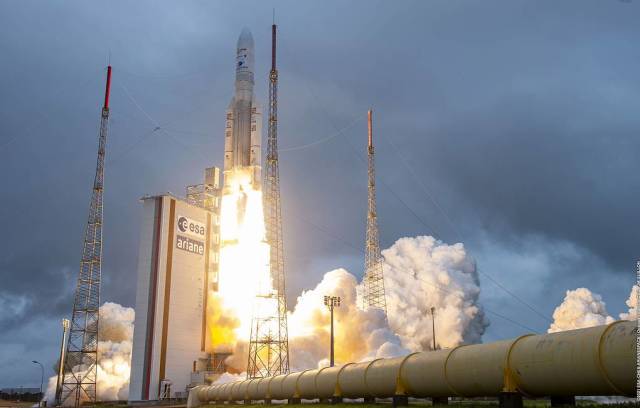Paris. December 25. INTERFAX - The Ariane V heavy rocket on Saturday launched the world's largest and most powerful James Webb Space Telescope (JWTS) worth $ 10 billion into orbit to study the processes of evolution of the Universe, the Arianespace carrier development company said.
"The telescope has been successfully put into orbit," the report says.
The launch was carried out at 13:20 Paris time (15:20 Moscow time) from the launch complex at the Kourou Cosmodrome in French Guiana. 27 minutes and 7 seconds after launch, the space telescope separated from the second stage of the launch vehicle at an altitude of approximately 1400 km. Following this, solar panels and an antenna for communication with the Earth opened on it.
The James Webb Station, developed by NASA in collaboration with the European Space Agency (ESA) and the Canadian Space Agency (CSA), is an orbital infrared observatory that will replace the Hubble Space Telescope launched in 1990. Compared to it, JWTS is 100 times more powerful due to the latest photosensitivity technologies used. Among the main tasks of the James Webb telescope is to detect the light of the first stars and galaxies that formed after the Big Bang.
He will study the early universe - the composition of the first stars and the evolution of galaxies. According to scientists, the universe is approximately 13.8 billion years old. The telescope will be able to record the radiation of objects that formed about 100-250 million years after the Big Bang. In addition, the telescope's tasks include the study of planetary systems and the search for signs of life on exoplanets.
The new 6.2-ton space observatory has a composite (of 18 hexagonal segments) mirror 6.5 meters in diameter with a collecting surface area of 25 square meters, which will make it possible to view the most distant objects of the universe. For comparison, Hubble has a mirror measuring 2.4 meters with a collecting surface of 4.5 square meters.
The James Webb telescope is equipped with a huge five-layer thermal screen, the size of which is comparable to a tennis court. The screen is designed to protect the observatory from sunlight in order to maintain the temperature of the mirror and instruments below minus 220 degrees to ensure working conditions in the infrared radiation range.
In the next few days, a sunscreen and a main mirror will be deployed on the telescope. In 29 days, the space telescope will have to reach the so-called L2 Lagrange point, at a distance of about 1.5 million km from Earth, from where it will begin to fully perform its tasks in mid-2022.

